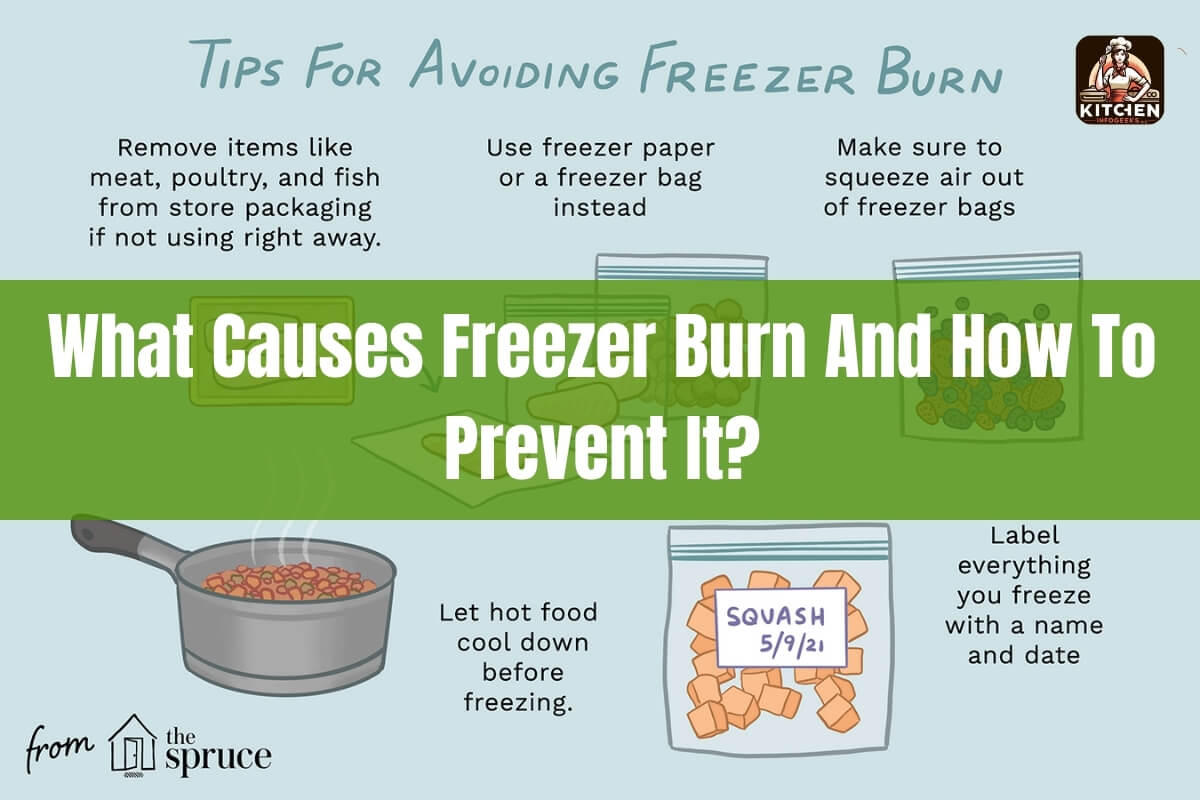
Have you ever opened your freezer to find that your frozen foods look discolored, shriveled, or covered in ice crystals? If so, you’ve likely encountered the dreaded freezer burn. This article will dive deep into what causes freezer burn, how to identify it, and most importantly, how to prevent it from happening to your frozen goods.
The main causes of freezer burn are exposure to air, moisture loss, and storage duration. Improper packaging and temperature fluctuations in the freezer also contribute to this phenomenon. We’ll cover all these factors and more to help you keep your frozen foods fresh and flavorful.
What is Freezer Burn?
Before we explore the causes, let’s first understand what freezer burn really is. Freezer burn occurs when frozen foods lose moisture through a process called sublimation. This happens when the solid ice crystals in the food transform directly into water vapor without going through the liquid state.
As the water molecules escape, they leave dry pockets within the food. This dehydration causes changes in texture, flavor, and appearance – resulting in the telltale signs of freezer burn.
Main Causes of Freezer Burn
Now that we know what freezer burn is, let’s examine the primary reasons why it happens:
1. Exposure to Air
One of the main culprits behind freezer burn is exposure to air. When air comes into contact with frozen foods, it can cause oxidation and moisture loss. This is why proper packaging is crucial in preventing freezer burn.
2. Moisture Loss
As mentioned earlier, freezer burn is essentially the result of moisture loss from frozen foods. As the water molecules escape through sublimation, the food becomes dry, shriveled, and tough.
3. Storage Duration
The longer you keep foods in the freezer, the higher the risk of freezer burn. While freezing is an excellent way to extend the shelf life of perishable items, it doesn’t make them immune to quality degradation over time.
4. Improper Packaging
Inadequate packaging is a direct invitation for freezer burn. If your frozen foods are not properly sealed and wrapped, air can easily seep in, leading to moisture loss and oxidation.
5. Temperature Fluctuations
Fluctuations in freezer temperature can also contribute to freezer burn. When the temperature rises above the ideal freezing point (0°F/-18°C), ice crystals start to form and migrate, causing dehydration and quality deterioration.
How to Identify Freezer Burn
Now that we know what causes freezer burn, let’s explore how to recognize it. The signs may vary slightly depending on the type of food, but here are some common indicators:
- Meats, poultry, and fish: Grayish-brown or white leathery spots, tough and dry texture when cooked.
- Fruits and vegetables: Shriveled appearance, ice crystals, woody texture when cooked.
- Baked goods and grains: Rougher texture, dryness, ice crystals.
- Ice cream: Loss of creamy texture, formation of ice crystals.
Preventing Freezer Burn: Top Tips
While freezer burn is an inevitable consequence of long-term freezer storage, there are several steps you can take to minimize its impact:
- Use airtight packaging: Wrap foods tightly in freezer-safe materials like plastic wrap, aluminum foil, or freezer bags. Remove as much air as possible before sealing.
- Maintain proper freezer temperature: Keep your freezer at 0°F (-18°C) or below to ensure foods freeze rapidly, forming smaller ice crystals that are less likely to cause damage.
- Store foods in smaller portions: Divide large quantities into smaller packages to reduce the amount of air exposure and the need for thawing and refreezing.
- Rotate your frozen foods: Consume older items first to prevent extended storage times that increase the risk of freezer burn.
- Avoid opening the freezer frequently: Constant temperature fluctuations can accelerate ice crystal formation and moisture loss.
The Bottom Line
Freezer burn may be an unsightly and unappetizing phenomenon, but it doesn’t necessarily make frozen foods unsafe to consume. However, it can significantly impact their texture, flavor, and overall quality.
By understanding the main causes of freezer burn – air exposure, moisture loss, storage duration, improper packaging, and temperature fluctuations – and taking preventive measures, you can keep your frozen goods in tip-top shape for longer periods.
Remember, while freezing is an excellent way to extend the shelf life of perishable items, it’s not a magic solution that makes them last forever. With proper handling and storage techniques, you can minimize freezer burn and enjoy your frozen favorites at their best.






